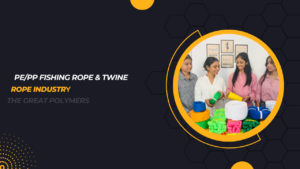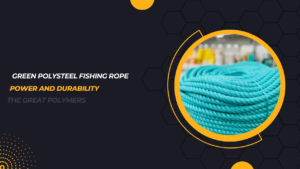In the realm of fishing, having the right equipment can significantly impact your success. Among the essential tools is the PE Fishing Net Twine Hank. This article delves into the intricacies of this vital component, its features, applications, and why it’s crucial for anglers.
Composition and Characteristics
PE (Polyethylene) Fishing Net Twine Hank is crafted from high-quality polyethylene material. This synthetic fiber boasts exceptional strength and resilience, making it ideal for demanding fishing environments. The twine’s composition ensures it withstands abrasion, tension, and environmental factors, providing reliability during extended use.
Applications in Fishing
PE Fishing Net Twine Hank finds extensive use in various fishing applications. From commercial fishing operations to recreational angling, it serves as the backbone of nets, traps, and lines. Its versatility allows for the construction of nets tailored to specific fishing needs, whether for catching small or large fish species.
Factors to Consider When Choosing PE Fishing Net Twine
Selecting the right PE Fishing Net Twine Hank involves considering several crucial factors to ensure optimal performance and durability.
Strength and Durability
One of the primary considerations is the twine’s strength and durability. Opt for twine with high tensile strength to withstand the rigors of fishing activities and environmental conditions.
Diameter and Mesh Size
The diameter of the twine and mesh size play a vital role in determining its suitability for different fishing applications. Smaller diameter twine with finer mesh sizes is ideal for capturing smaller fish, while larger diameters with broader meshes are suitable for larger species.
UV Resistance
UV resistance is another critical factor, especially for fishing in open waters under the sun’s exposure. Choose PE Fishing Net Twine Hank with UV stabilizers to prevent degradation and extend its lifespan.
Benefits of PE Fishing Net Twine Hank
Cost-Effectiveness
PE Fishing Net Twine Hank offers a cost-effective solution for anglers due to its longevity and durability. Its ability to withstand harsh marine environments reduces the frequency of replacement, ultimately saving costs in the long run.
Longevity
Compared to traditional natural fibers, PE Fishing Net Twine Hank boasts superior longevity. Its resistance to rot, mildew, and degradation ensures prolonged use without compromising performance.
Ease of Handling
Another advantage is its ease of handling during net construction and repair. The twine’s smooth texture and flexibility facilitate knot tying and maneuverability, enhancing efficiency during fishing operations.
Tips for Proper Maintenance and Storage
To maximize the lifespan and performance of PE Fishing Net Twine Hank, proper maintenance and storage are paramount. Ensure the twine is thoroughly cleaned and dried after each use to prevent moisture retention and potential deterioration. Store it in a cool, dry place away from direct sunlight to minimize UV exposure and prolong its shelf life.
Conclusion
PE Fishing Net Twine Hank stands as a cornerstone in the world of fishing, offering unmatched strength, durability, and versatility. Understanding its composition, applications, and selection criteria equips anglers with the knowledge needed to make informed decisions and enhance their fishing endeavors.
FAQs (Frequently Asked Questions)
1. Is PE Fishing Net Twine Hank suitable for both freshwater and saltwater fishing?
Yes, PE Fishing Net Twine Hank is designed to withstand both freshwater and saltwater environments, making it suitable for various fishing settings.
2. How often should I replace PE Fishing Net Twine Hank?
The frequency of replacement depends on factors such as usage, exposure to environmental elements, and maintenance practices. Generally, inspect the twine regularly for signs of wear and replace it as needed to ensure optimal performance.
3. Can PE Fishing Net Twine Hank be recycled?
Yes, PE Fishing Net Twine Hank is recyclable. Proper disposal and recycling efforts contribute to environmental sustainability and reduce waste accumulation in aquatic ecosystems.
4. Does the diameter of PE Fishing Net Twine Hank affect its strength?
Yes, the diameter of the twine influences its strength. Thicker twine typically offers higher tensile strength, making it suitable for heavier loads and larger fish species.
5. Can PE Fishing Net Twine Hank be used for purposes other than fishing?
While its primary application is in fishing, PE Fishing Net Twine Hank can be repurposed for various DIY projects, gardening, and crafts requiring durable and versatile twine.











Leave a reply